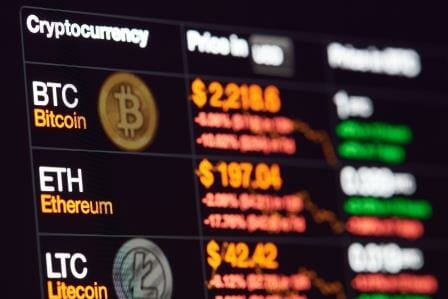According to an Ark study, the market capitalization of Bitcoin could increase 14 times by 2025. The trading volume and the liquidity of Bitcoin are beginning to attract institutional investors.
Ark Invest says in the introduction to its study “Bitcoin as an investment”, published on December 17th, that the cryptocurrency has been “the highest performing asset in the 21st century”. This research says that this crypto asset has four strengths that allow the efficiency and predictability of a financial system.
Bitcoin’s market capitalization still has plenty of room to grow from its current level (around USD 220 million) if its adoption increases in four main aspects: a global settlement system, a protection against confiscations, a form of digital gold, and a catalyst for demonetization in emerging markets.
Bitcoin as a Global Settlement Network
According to Ark Invest, users must settle all international payments in US dollars through the Federal Reserve’s Real Time Gross Settlement (RTGS). “Bitcoin obviates the need for intermediaries to mediate and settle transactions and is capable of settling high-value transactions.”
If Bitcoin only captured 10% of settlement volumes in the United States, which total USD 1.3 trillion, it could escalate 7 times, from USD 200 billion to USD 1.5 trillion.
Bitcoin as Protection against Asset Confiscation
In the face of capital confiscations that some governments have conducted, citizens often have no protection, the study states. Instead, Bitcoin allows for personal sovereignty. “We believe that, with good management of public and private keys, it is impossible to confiscate Bitcoin,” say the authors.
If Bitcoin received the allocation of 5% of the fiat currency assets of emerging countries, its value would go from USD 200,000 million to USD 2.5 trillion.
Bitcoin as a Form of Digital Gold
When comparing Bitcoin to gold, the study highlighted several advantages of the main cryptocurrency over the precious metal. For example, Bitcoin is more efficient in terms of portability, divisibility, verification, and transferability attributes that protect against centralization.
Regarding the potential for expansion of the value of Bitcoin, Ark Invest argues that, if it managed to grow to occupy 10% of the gold market, it would reach almost a value of USD 1 trillion, which is equivalent to a multiplication by 5.
Bitcoin as Catalyst for Demonetization in Emerging Markets
Concerning countries with high inflation rates or hyperinflation, Ark Invest notes the lack of confidence in the monetary authorities. They say that this leads investors, as well as those who want to save, to seek safe haven assets like gold or Bitcoin.
Since Bitcoin is not subject to capital controls, it can become an important savings vehicle in emerging markets. That would occur to such an extent that businesses could demand payment in Bitcoin instead of in fiat.
If Bitcoin could capture 5% of the global monetary base outside of the largest fiat currencies (US dollar, yen, yuan, and euro), its market capitalization would multiply by six, and it could reach USD 1.2 trillion.
Bitcoin is Measured against «FANG»
Ark Invest proposes FANG, acronyms for Facebook, Amazon, Netflix and Google, which lead the web, the birthplace of Bitcoin. With this, they seek to measure Bitcoin against comparable companies, according to its trading volume.
The Ark Invest study highlights that the trading volume of Bitcoin, compared to the shares of “FANG”, exceeds those of Netflix, and Google, but is less than those of Facebook and Amazon.
According to the authors, Bitcoin’s trading volume has grown exponentially. “Since early 2013, the compound annual growth rate has been 215%, which means that volumes triple every year,” says the study.
The rapid growth of Bitcoin as a monetary asset has positioned it for inclusion in diversified investment portfolios, the study concludes. By offering the most attractive risk/reward profiles in the market, “it should escalate from USD 200 billion, to between USD 1 trillion and USD 5 trillion in capitalization over the next 5 to 10 years.”
By Alexander Salazar











